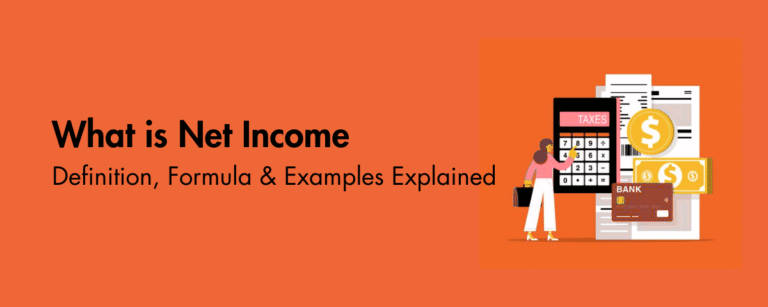That first morning you breathe out a little. Two weeks later, seniors are out of the weeds, managers are reviewing, and you finally have space for advisory calls that have sat on the back burner since January.
If that sounds like the kind of breathing room you need, outsourcing to India can get you there without ballooning payroll or sacrificing control. You keep the client relationship and the sign-off. You shift routine cycles to a trained offshore team with clear SLAs, tight security, and repeatable quality checks.
Table of Contents
- Key takeaways
- What this guide covers and how to use it
- Cost savings and profit impact for CPA firms
- Efficiency, scalability, and the overnight cycle
- Quality, compliance, and trusted expertise
- Technology infrastructure and data security practices
- Selecting the right outsourcing partner and operating model
- Steps to launch and scale your India program
- Pilot, measure, scale
- Frequently asked questions
- Conclusion and next steps
Key takeaways
- Outsourcing to India typically cuts delivery costs by 40 to 60 percent, turning fixed payroll into variable spend and protecting margins.
- Time zone coverage creates an overnight cycle, so reconciliations and tax prep move faster with SLA-backed predictability, for example 48 hour reconciliations and a five day close.
- Scale up during tax season, scale down after, while keeping onshore teams focused on client-facing work and advisory.
- Quality stays tight with SOPs, tiered reviews for 1040, 1065, and 1120, and error targets at or below 1 to 2 percent.
- Start with a 60 to 90 day pilot, track KPI scorecards for turnaround and accuracy, then expand once you hit targets.
What this guide covers and how to use it
You will find a no-fluff field guide, written for busy partners and ops leaders who want immediate wins without losing control. We will cover cost and profit impact, the overnight cycle and scalability, quality and compliance, modern security controls, vendor selection, and a launch plan you can run next quarter. You will also get FAQs you can share with staff and clients.
If you are evaluating vendors now, you will see occasional notes where Accountably can help. We will keep those light and only where they add value, since this piece is meant to stand on its own.
Cost savings and profit impact for CPA firms
The biggest shift you feel first is in your P&L. Outsourcing routine accounting and tax production work to India commonly lowers the fully loaded cost of delivery by 40 to 60 percent. Salaries, benefits, office space, and recruitment overhead fall away, and you replace fixed payroll with variable capacity that fits your seasonal curve.
Put simply, you stop carrying a year round team sized for March and April. You right size in August and September, then add seats when volume spikes.
Here is what that looks like in practice:
- Entry level and staff level work moves offshore with SOPs and templates.
- Seniors spend less time reconciling and more time reviewing.
- Managers are freed up for consults, planning, and client communication.
- Partners get hours back for high value advisory and business development.
If you prefer numbers, consider three quick levers you control:
- Mix shift Move bookkeeping, AP, AR, bank recs, and first pass tax prep offshore. Keep final review and client calls onshore. This alone increases margin per engagement while protecting quality.
- Variable staffing Add seats in the ten weeks that crush your team, then release capacity when the tide goes out. You maintain response times without permanent headcount.
- Capital redeployment Savings fund tech upgrades, training, and marketing that have been hard to prioritize. Over a year, that shows up as faster close, higher revenue per partner, and lower burnout.
“Outsourcing accounting to India trims staffing and operating costs by 40 to 60 percent,” is the headline. The deeper story is control. You decide the scope, the SOPs, the SLAs, and the review points. The model works because you stay in the driver’s seat.
Efficiency, scalability, and the overnight cycle
Your fastest win is the clock. You hand off at U.S. close, your offshore team starts within their morning window, and you wake up to work that is ready to review. For deadline driven filings, that cycle compresses turnaround by 24 to 48 hours without asking your onshore team to work late.
What improves first
- Reconciliations, month end close tasks, and PBC lists move faster.
- Tax prep throughput increases because first pass returns land overnight.
- Your review queue stays full, so managers do not stall waiting on inputs.
- SLA backed handoffs make schedules predictable, which calms the team.
Why scale feels easier, not heavier
- You can add a bookkeeper, a tax associate, or a mini team in days, not months.
- Training is standardized in SOPs and templated checklists, so ramp time falls.
- When volume drops, you release capacity without layoffs or morale hits.
Snapshot table
| Driver | Metric | Strategic impact |
| Time zone coverage | Overnight cycle | Faster close, fewer bottlenecks |
| Scalability | 40 to 60 percent lower peak hiring | Shorter time to staff busy season |
| Cost efficiency | Reduced fixed headcount | Higher gross margin per job |
| Workflow continuity | SLA handoffs | Predictable delivery and fewer fire drills |
In day to day practice, you will still run your firm the same way. You will just spend less time chasing status and more time reviewing finished work, talking to clients, and growing the book.
Quality, compliance, and trusted expertise
Quality is not a nice to have. It is the bedrock of your license, your insurance renewal, and your reputation. When you evaluate partners in India, load test rigor, not only price. You want US GAAP and IFRS capable staff, repeatable checklists, and tiered tax reviews that mirror how you already work.
India is not short on talent. The Institute of Chartered Accountants of India reports more than 400,000 members and a student base nearing one million, which means a large pipeline of trained professionals for U.S. work. That scale, plus specialization, is why the bench is deep enough for tax, CAS, and audit support at once. (icai.org)
A quick standard to apply: ask to see documented SOPs, reviewer checklists for 1040, 1065, and 1120, and anonymized sample workpapers. If a vendor hesitates, move on.
You will also want proof of information security and controls. Look for current ISO/IEC 27001 certification and SOC 2 Type II reports that cover a full year of operating effectiveness against the AICPA Trust Services Criteria. ISO/IEC 27001:2022 is the latest version of the information security management standard, and SOC 2 reports evaluate controls for security, availability, processing integrity, confidentiality, and privacy. (en.wikipedia.org)
Bottom line, if a partner cannot show you recent ISO 27001 and SOC 2 Type II evidence, keep looking. You cannot outsource risk. You can only outsource work.
Technology infrastructure and data security practices
When you move work outside your four walls, trust rests on controls you can verify. The right India partner will run a cloud first stack that is secure, observable, and easy for your team to use day to day.
You should expect ISO/IEC 27001 aligned policies, SOC 2 Type II reports, SSO with MFA, and strong encryption. Ask how they provision users, how they revoke access, and how they monitor activity. Good answers come with screenshots and sample logs, not vague promises.
Secure cloud collaboration that your team will actually use
Start with identity. Require SSO, for example Okta, Azure AD, or Google Workspace, with multi factor authentication for all users. Tie roles to groups, so new staff get only the exact permissions they need.
- Enforce VPN only access for remote sessions.
- Use role based access controls inside QuickBooks Online, NetSuite, Xero, and your document tools.
- Turn on centralized logging and alerts, so you see failed logins, permission changes, and file exports in one place.
- Standardize video and chat on secure options, for example Zoom and Microsoft Teams, both with encryption turned on.
Back this up with quarterly security drills. Ask your partner to show results, actions taken, and owners. You are looking for a culture of improvement, not box checking.
A practical tip, set up a joint security channel with your vendor. Share planned changes, patch windows, and incident updates in real time, so nothing slips through the cracks.
Accounting software that supports scale without losing control
You do not need an exotic stack to benefit from outsourcing. What you need is consistency and good hygiene.
- Core platforms: QuickBooks Online and NetSuite for most clients, with Xero, Sage, or SAP where needed.
- Connectivity: API integrations and managed connectors for bank feeds, expense tools, and payroll systems.
- Automation: rules for bank feeds, OCR for invoices, and basic RPA for repeat clicks that do not need judgment.
- Controls: least privilege roles, quarterly access reviews, versioned workpapers, and documented handoffs.
Here is a quick snapshot you can share with your team.
| Capability | Practice | Outcome |
| Platforms | QuickBooks, NetSuite | Unified ledgers and familiar workflows |
| Connectivity | API integration | Fewer manual imports, cleaner audit trails |
| Automation | Rules, OCR, light RPA | Shorter closes, fewer keystroke errors |
| Controls | MFA, least privilege | Lower access risk and simpler audits |
| Assurance | ISO 27001, SOC 2 Type II | Verifiable trust signals for clients |
The goal is not flashy tools. The goal is reliable delivery your managers can review without hunting for context.
Stronger data protection, day in and day out
Modern tools only matter if the data is safe. Build a short list of non negotiables into your agreement.
- Encryption: TLS 1.2 or higher in transit, AES 256 at rest.
- Network: segmented environments, VPN only access, and firewall rules reviewed on a schedule.
- Testing: quarterly vulnerability scans, patch SLAs, and independent penetration tests with summarized findings.
- Operations: documented incident response, breach notification timelines, and disaster recovery tests with evidence.
- Privacy: GDPR aligned clauses where applicable, a clear data processing agreement, and retention rules you can audit.
Ask for sample redacted evidence up front, for example the latest pen test executive summary, SOC 2 Type II report dates, and a list of security awareness topics covered in training. Good partners will be ready to share.
You cannot eliminate risk, but you can lower it with clear rules and shared discipline. Treat security like quality, with scorecards and owners.
Selecting the right outsourcing partner and operating model
The cheapest quote is rarely the right call. You want a partner who shows their work, who can staff fast without cutting corners, and who mirrors how CPA firms operate in the United States.
- Certifications and reports: current ISO 27001 certificate and SOC 2 Type II with a recent audit period.
- Tax capability: documented experience across 1040, 1065, and 1120, with reviewer checklists and sample outputs.
- Tools: working knowledge of QuickBooks, NetSuite, Xero, and leading tax suites, with proof of secure integrations.
- References: firms that look like yours, willing to speak about accuracy, speed, and communication.
Choose a model that fits your appetite for control.
- Vendor managed pods, fastest to start, lighter lift for your team.
- Dedicated FTEs, stable capacity and deeper knowledge of your book.
- Employer of record, more control and higher commitment.
- Your own entity, best for large firms that can invest for several years.
A quick note on Accountably, since this lives on our site. If you want a partner that combines a secure operating environment, process driven delivery, and CPA tier review options, Accountably can support a 60 to 90 day pilot with clear KPI scorecards and weekly governance. We will keep mentions light, and we are happy to compare options side by side if you are still evaluating.
Steps to launch and scale your India program
Think in three moves, define, pilot, and expand.
Define scope and goals
Write down the exact work types you want to move first, for example bookkeeping, bank and credit card reconciliations, AP and AR, payroll support, first pass prep for 1040, 1065, and 1120, and month end close tasks. Tie each to turnaround SLAs, for example bank recs in 48 hours, month end close in five business days, and error targets at or below 1 to 2 percent.
Document your platforms, security requirements, and escalation path. Pick an engagement model, then outline roles and cadence, standups, overlap hours, weekly scorecards, and monthly reviews.
Run a tight pilot
Start with 1 to 3 FTEs for 60 to 90 days. Keep the initial scope narrow and repeatable, so you can measure clearly.
- SOPs, checklists, and templated workpapers from day one.
- Access via SSO and VPN, with least privilege roles and audit logs on.
- KPIs you can see each week, turnaround time, error rates, and rework.
- Exception tracking with root causes and fix owners.
When you hit targets for two consecutive months, move to phase two. If you miss a target, adjust scope or staffing and try again. The point is to learn quickly with low risk.
Pilot, measure, scale
You de risk an outsourcing program by treating the first 60 to 90 days like an experiment with clear pass or fail criteria. Keep the scope tight, measure weekly, and expand only after you see two straight months of stable performance.
What a strong pilot looks like
- Team: 1 to 3 FTEs focused on bookkeeping, bank and credit card reconciliations, and first pass tax prep.
- Controls: SSO with MFA, VPN only access, least privilege roles, and audit logs turned on from day one.
- Process: SOPs, reviewer checklists for 1040, 1065, and 1120, and templated workpapers that your managers already know.
- KPIs: overnight turnaround, month end close in five business days, error rate at or below 1 to 2 percent, and cost per task tracking.
Use a shared scorecard everyone can see. Track turnaround, accuracy, rework, exceptions, and ticket age. Each issue needs an owner and a due date. This builds trust faster than long status emails ever could.
A fast fix beats a perfect plan. Capture the miss, assign the fix, and update the SOP so the same error does not show up again.
Scale in phases, not in a rush
When the pilot hits targets for two consecutive months, expand to adjacent services, for example AP and AR support, payroll support, more complex returns, and additional close tasks. Increase capacity in small steps, for example 2 to 4 seats at a time, then review the impact on KPIs before the next step.
- Keep a 1 to 8 onshore to offshore oversight ratio.
- Add overlap hours during peak cycles to make reviews and escalations easy.
- Run quarterly training on new templates, regulatory changes, and security topics.
Governance that keeps quality steady
- Weekly ops review, 30 minutes, scorecard driven, issues and owners only.
- Monthly service review with managers, trends, risks, staffing plan.
- Quarterly audit of SOPs, access, incident logs, and training completion, with evidence attached in your system of record.
A quick note on Accountably, since this guide lives on our site. If you want help setting up the scorecard, SOPs, and governance cadence, Accountably can provide a starter toolkit and a guided 60 to 90 day pilot. We keep the structure tight, you stay in control.
Frequently asked questions
How do clients perceive outsourced work and how do we communicate with offshore teams?
Clients care about quality, timelines, and privacy. Tell them who does the work, how you review it, and what safeguards protect their data. Keep communication predictable with a named point of contact, defined escalation windows, and a simple service calendar that shows deadlines and SLAs. Two to three check ins during the first month usually settles nerves.
What cultural training helps our onshore team work smoothly with India based staff?
Run short workshops on written clarity, meeting etiquette, and feedback style. Agree on response time norms, avoid idioms, and write action items at the end of every call. Role play tricky moments, for example pushing back on incomplete PBCs, so both sides practice constructive language. Measure collaboration with simple metrics like reopened tickets and review cycle time.
How are holidays and overlapping hours coordinated across countries?
Publish a shared holiday calendar before the quarter starts and lock coverage plans two weeks out. Set a small overlap window each day, for example 60 to 90 minutes, for reviews and escalations. Use shared runbooks for month end and tax deadlines, so the team knows exactly who is on point. Real time alerts in Slack or Teams keep both sides aware when schedules change.
How do we protect morale when roles shift because of offshoring?
Be transparent about the why and the what. Show staff how the plan reduces overtime, opens training paths, and creates time for higher value work. Pair staff with offshore counterparts for knowledge sharing, and recognize quick wins publicly. Track burnout signals, PTO, and utilization so you can adjust before busy season hits.
What contingency plans cover geopolitical or regulatory shifts in India?
Treat it like business continuity. Maintain a second delivery location or an alternate vendor, hold encrypted backups, and run quarterly failover drills. Include data localization options in your contracts and set insurance coverage to match your risk appetite. Keep a playbook for incident communication, with templates ready for clients, staff, and regulators.
Conclusion and next steps
You now have a clear path to lower cost, faster cycles, and a calmer team. Start small, protect quality with SOPs and tiered reviews, and make security a habit you can prove. Track a handful of KPIs, turnaround, accuracy, rework, and cost per task, then expand once the numbers hold steady.
The winning move is simple, ship routine work overnight, review in the morning, and keep your best people focused on clients and complex judgment.
If you want a partner that respects your standards and gives you measurable outcomes, run a 60 to 90 day pilot. Keep the scope tight, score the results weekly, and decide with data. If you want help, Accountably can set up the pilot, staff a small team, and align SOPs, SLAs, and security controls with how your firm already works. When you are ready, start the pilot, learn fast, then scale with confidence.








